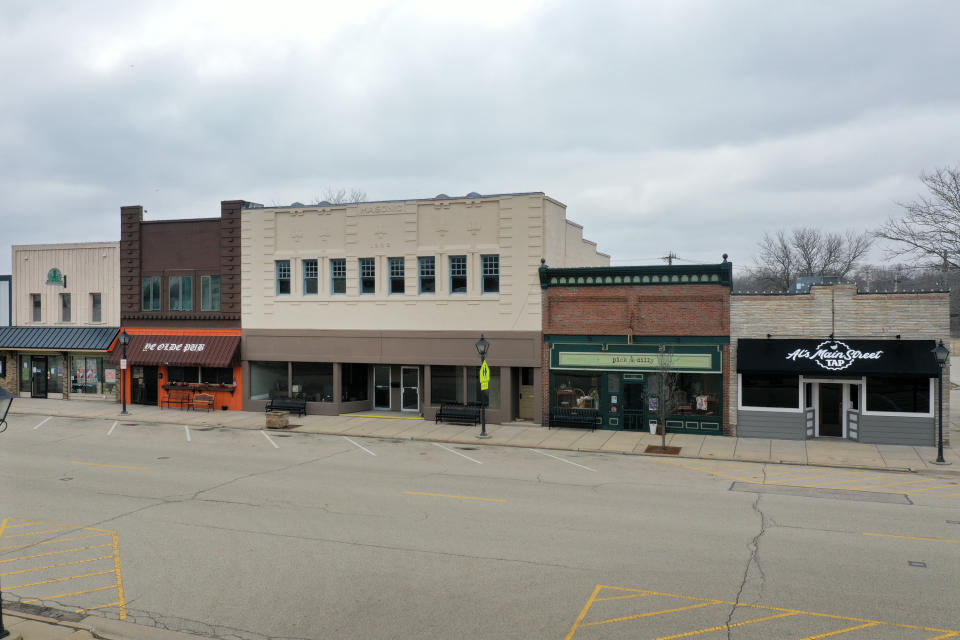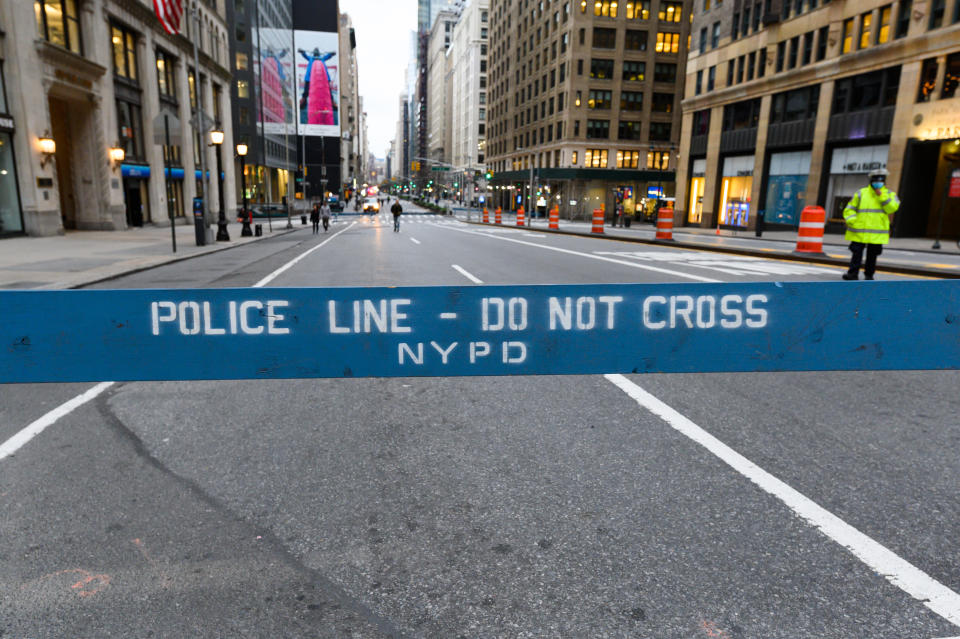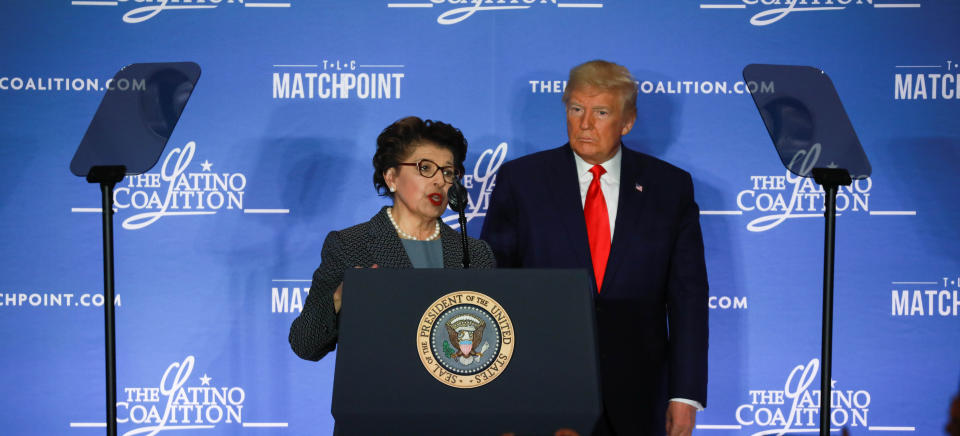Here's the plan for how $349 billion in small-business loans will be administered
On April 3, with much fanfare, the $349 billion “Paycheck Protection Program” will begin to offer loans to small businesses around the country currently facing bankruptcy as the U.S. and other countries fight the global coronavirus pandemic.
“These loans will be forgiven as long as businesses keep paying their workers,” President Trump said on Thursday adding, “on Friday, April 3, that’s when it begins.”
Throughout the week, Trump, Treasury Secretary Steven Mnuchin, senior administration officials, and even first daughter advisor to the president, Ivanka Trump, have been talking up the program and how it will help the economy.
Many questions remain – from exactly how the loan process will work in the age of social distancing to whether the banks will have the guidance they need to administer these loans. There’s even a question a whether $349 billion will be enough.
Here’s what we know right now. (Further information on the program is available at treasury.gov/cares and sba.gov/coronavirus.)
Who exactly is eligible for these loans
Loans are designed to cover U.S. businesses with 500 or fewer employees. That also includes nonprofits, veterans organizations, tribal business concerns, and sole proprietorships.
Businesses will be required to verify they were operational on Feb. 15 and that they have been negatively impacted by the coronavirus.
The SBA has provided a sample form to give a sense of what information will be needed. The exact application form will be determined by the financial institution actually administering the loan (more on that below).

The business will also need to provide evidence of the size of their payroll. This is key in determining the size of the loan. The loans can be made for up to 2.5 times the average monthly payroll of a business but can’t exceed $10 million per business.
The loans are designed to “provide eight weeks of payroll and certain overhead to keep workers employed,” said Mnuchin.
Where you go to get them
The biggest change in how these government loans will be administered is that you won’t need to go to the government to get them.
Calling the plan an “unprecedented public-private partnership,” Small Business Administrator Jovita Carranza said. The “goal is to position lenders as the single point-of-contact for small businesses – the application, loan processing, and disbursement of funds will all be administered at the community level.”
The lending partners include any existing SBA lender (which includes thousands of banks), as well as any FDIC-insured institution, federally insured credit union, or Farm Credit System institution that is participating.
In addition, according to a senior administration official, other regulated lenders will be available soon to make loans “as soon as they are approved and enrolled in the program, which will happen rapidly.”
Some banks have warned of a chaotic launch to the program given that the Trump administration has only provided limited guidance to banks on how to administer the loans.

“Banks are ready to do everything humanly possible to support U.S. small businesses,” Consumer Bankers Association President Richard Hunt said in a statement, adding a note of caution that they are “ramping up an approximately $20 billion annual program to nearly $350 billion in just a few months.”
Rep. Maxine Waters (D., CA), Chairwoman of the House Financial Services Committee, sent a letter to administration officials asking that community banks, credit unions, minority depository institutions, and Community Development Financial Institutions all “have the resources they need to participate” in the program.
Trump administration officials say the loans can be processed remotely to adhere to shelter-in-place orders and social distancing guidelines.
The hope is for as simple an application process as possible. The SBA has also promised to post information on its website for businesses to find lenders in their area.
How quickly the money will go out
With a stripped-down application process, officials promise that businesses will see loan approval quickly – perhaps even on the same day they apply.
The only requirement for lending institutions is that they verify the tax ID number with the Small Business Administration to ensure that a business has not already received a loan.
Officials repeatedly stressed that officials in Washington will not be making the actual decision on whether or not to grant the loan; that will be up to the lending institution.
If all goes well, “that loan is immediately booked,” one official said. “Speed is the operative word,” the SBA’s Carranza said.

What happens if they run out of money?
The total funds available – $349 billion – may be actually used up quickly.
Banks are expecting millions of applications and, according to a senior administration official, the way that loans are going to be disbursed is “on a first come, first served basis.”
Mnuchin has said that if the billions get used up, he will go back to Congress to ask for more money.
Businesses will also have access to another pool of money in a different part of the stimulus bill. The Federal Reserve and Treasury are set to stand up a $500 billion “big credit facility” as part of the economic recovery that will also provide funds – mostly in the form of loans – to businesses of varying sizes.
What the money can they be used for
If they want the loan to be forgiven, businesses participating in the Paycheck Protection Program will need to spend the money primarily on workers. Paying rent, interest on their mortgages, utilities, or other overhead costs are also acceptable for a portion of the money received.
“The loans will be forgiven as long as the funds are used to keep employees on the payroll and for certain other expenses,” Mnuchin said.
If businesses don't maintain certain employment levels (based on who they had on the payroll on Feb. 15) then there is a provision where the amount forgiven will be reduced. When the time comes to ask for forgiveness, officials say businesses will be required to submit documentation showing how they spent the loan money.
If the businesses follow the rules, according to administration officials, the entire loan will be forgiven, making it effectively a grant.
Ben Werschkul is a producer for Yahoo Finance in Washington, DC.
Read more:
Coronavirus stimulus package: Aid and stimulus guide for U.S. individuals and businesses
Ivanka Trump on $2 trillion coronavirus relief: Our mandate is to ‘swing for the fences’
Here's what’s in the $2 trillion coronavirus stimulus deal for businesses
Read the latest financial and business news from Yahoo Finance
Follow Yahoo Finance on Twitter, Facebook, Instagram, Flipboard, LinkedIn, YouTube, and reddit.
